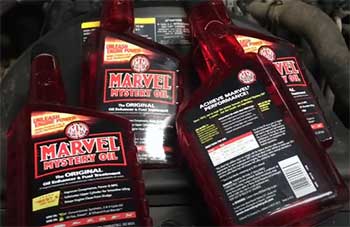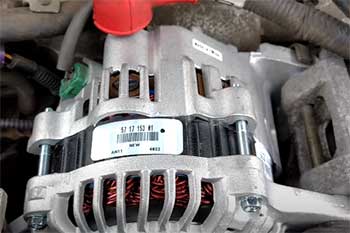I recently discovered Turo, and I have to say that if you’re considering your next car rental experience, you really should give Turo a try. Trust me—I’ve experienced it firsthand, and it completely transformed how I view car sharing.
As the world’s largest car sharing marketplace, Turo offers an unparalleled selection of vehicles right at your fingertips. If you’re looking for a quick and reliable way to rent a car, Turo is the answer.
In this article, I’ll share my personal experiences, analytical insights, pros and cons, maintenance tips, and comparisons with other brands so you can make an informed choice.
My Experience With Turo Car Rental
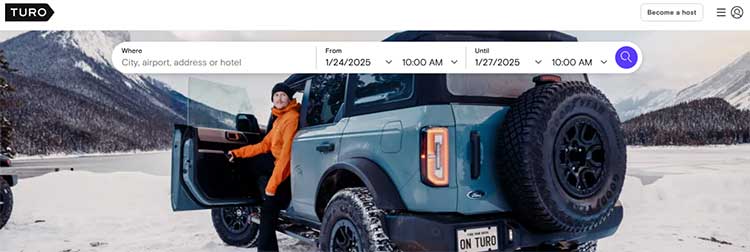
Over the past few years, I’ve tried various car rental services, yet none have matched the freedom and variety that Turo offers. When I first stumbled upon Turo, I was intrigued by its promise of unique vehicles—from rugged trucks to sleek convertibles—and the ability to skip the long lines at traditional rental counters.
I remember booking my first trip through Turo and feeling a wave of excitement as I realized I was about to drive something that wasn’t available through conventional channels.
The booking process was refreshingly straightforward. Navigating the website felt more like browsing a well-curated marketplace rather than wading through a confusing rental portal. Each host provided detailed profiles and car descriptions, which gave me the confidence to make a secure decision.
I genuinely appreciated that transparency. With a host community that spans across various countries, I felt comfortable knowing that I wasn’t just renting a car—I was engaging with real people who value their vehicles as much as I do.
Once I picked my ride, the experience was seamless. The handover process was personal yet professional; I met my host, went through a quick check of the car’s condition, and we exchanged a few friendly words.
It wasn’t just a transaction—it felt like a small encounter with someone who takes pride in what they offer. By the time I returned the vehicle, I realized that Turo had set a new standard for car rentals.
Understanding Turo: What Sets It Apart?
When I first heard about Turo, it struck me as innovative—a chance to reimagine traditional car rentals by turning the process into something more personalized.
Turo isn’t just a rental service; it’s a car sharing marketplace that connects renters with local hosts who have vehicles that might otherwise sit idle. This platform makes it possible for anyone with an underutilized car to monetize it while providing unique rental options for travelers.
Turo’s mission is impressive—it aims to put the world’s 1.5 billion cars to better use by unlocking their hidden value. I was particularly impressed with how Turo helps entrepreneurs build car sharing businesses.
With millions of vehicles out there, Turo ensures that those looking for a car rental experience get access to something that suits their exact needs, whether they’re looking for a family SUV, a sporty convertible, or a rugged truck for off-road adventures.
Pros of Turo Car Rental
Talking about the positives always makes my experience with Turo stand out. Here are some key benefits I’ve observed:

- Variety of Vehicles: One of the highlights of Turo is the incredible diversity in the types of vehicles available. Unlike traditional rental companies that usually offer a handful of standard options, Turo features a wide array of cars—from everyday commuters to luxury and specialty vehicles. This means if you’re in the mood for something unique, or if you simply need a specific model for a special occasion, Turo has you covered.
- Personalized Experience: The personal touch is one of Turo’s best attributes. I found that interacting directly with hosts made the whole experience feel more like renting from a friend than from a faceless company. Each host’s detailed profile, along with user reviews and ratings, builds a sense of trust and community that is hard to come by in the traditional rental space.
- Flexibility in Rental Terms: Flexibility is another strong suit of Turo. Whether you need a car for a few hours, a day, or even a week, Turo’s hosts are often willing to accommodate varying rental periods. This flexibility can be a game-changer if you have unique scheduling requirements or need a car for a short trip that doesn’t fit the typical rental timeframe.
- Competitive Pricing: In my experience, Turo’s pricing is competitive compared to mainstream car rental companies. Often, you can find better deals, especially when you factor in the personal service and the extra convenience of choosing a car that fits your exact style or need. Whether you’re on a tight budget or looking for something more luxurious, Turo offers options for every wallet.
- Ease of Use and Convenience: The website and mobile app are both user-friendly and well-designed, making it easy to search for, compare, and book cars. I particularly appreciate the detailed filters that allow you to narrow down choices based on car type, price, and location. This convenience makes planning your trip as simple as a few taps on your smartphone.
Cons of Turo Car Rental
No service is perfect, and I do have some observations regarding the areas where Turo might fall short.
- Variability in Vehicle Quality: While the vast selection is a major plus, it does sometimes come with inconsistency. Since the cars are owned by individuals rather than a centralized fleet, the quality and condition of vehicles can vary significantly. I have encountered a few instances where the car didn’t meet my expectations in terms of cleanliness or maintenance.
- Insurance and Liability Concerns: Insurance is an essential aspect of any rental service, and while Turo does offer coverage options, the process isn’t always as straightforward as I’d like. Some travelers may find the insurance policies and liability clauses a bit complicated, and it’s important to read through the details carefully before finalizing a rental. That said, once you understand the coverage, it’s generally a safe bet.
- Communication Challenges: Another minor downside is that communication with hosts can sometimes be unpredictable. While I’ve had many positive interactions, there were occasions when response times were slower than anticipated. If you’re facing a time crunch, this can be a bit frustrating, so it’s important to plan ahead and confirm details well in advance.
- Hidden Fees and Pricing Variability: Even though Turo’s pricing tends to be competitive, some users have mentioned unexpected fees or price increases, especially during peak times or last-minute bookings. It’s crucial to carefully review the pricing breakdown before confirming your rental to avoid any surprises.
Maintenance Tips For Turo Rentals
Over time, I’ve learned that proper maintenance—not just of the vehicle but also ensuring your rental experience goes smoothly—is key. Here are some maintenance tips that can help you get the most out of your Turo rental experience:
Before the Rental
- Inspect the Vehicle: When you first collect the car, take some time to inspect it thoroughly. Check the exterior for any pre-existing damages such as scratches or dents, and document them if necessary. I always take pictures and share them with the host to ensure there are no disputes later.
- Review the Host’s Guidelines: Each host often provides a set of guidelines tailored to their vehicle. Read these carefully, as they might include specifics on how to handle minor maintenance issues during your rental period.
- Understand the Insurance Coverage: Make sure you fully understand what is covered under the Turo insurance plan. If you have any questions, don’t hesitate to reach out to both Turo support and your host for clarification.
During the Rental
- Keep the Car Clean: Treat the car with the same care as if it were your own. I recommend keeping a small bag in the car for any trash or items that might clutter the interior. A clean car not only impresses the host but also ensures that you receive a full security deposit refund.
- Monitor the Fuel Level: A small but effective tip—always check the fuel level when you pick up and return the car. Some hosts require you to return the car with the same fuel level as when you picked it up, so taking a few moments to document this with photos can prevent any fuel charge disputes.
- Use Authorized Service Centers: If you encounter a maintenance issue while using the car, refer to the host’s guidelines on contacting authorized service centers. Trying to fix issues yourself or using non-certified repair shops might void any insurance coverage and cause complications.
After the Rental
- Return the Car in Good Condition: Always return the vehicle in the condition you received it, barring normal wear and tear. I make it a habit to do a quick clean-up before handing the keys back to the host.
- Provide Honest Feedback: After your rental, provide a candid review of your experience. This feedback not only helps other renters but also enables the host to improve their services.
- Save All Documentation: Keep copies of the rental agreement, photos of the car’s condition both at the start and end, and any communications with the host. This can be very useful in case any disputes arise later.
Detailed Maintenance Tips For A Smooth Car Rental Experience
Over time, I’ve recognized that a proactive approach to maintenance can ensure that both you and the host enjoy a hassle-free rental period. Here are some in-depth maintenance tips that I’ve found to be incredibly useful:
Proactive Inspection and Communication
Before you drive off with a Turo car, it’s crucial to have a detailed inspection routine. Here’s what I usually do:
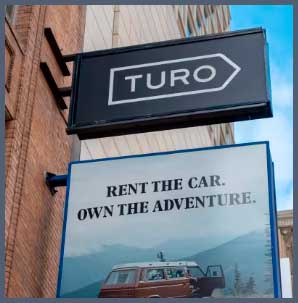
- Exterior Check: Walk around the car and carefully look for any scratches, dents, or damage. Use your phone to take multiple photos from different angles. This documentation serves as evidence that the car was in good condition at the time of pickup.
- Interior Check: Don’t just focus on the exterior. Inspect the dashboard, seats, and general cleanliness of the interior. Look out for any stains, odors, or signs of wear that might need to be noted.
- Functionality Check: Test the lights, brakes, and other functionalities before you leave the parking spot. Even a small issue, if identified early, can be communicated to the host immediately.
After the inspection, I always message the host, confirming the condition of the car. This step not only builds trust but also sets clear expectations for both parties.
Usage Practices
Maintaining the vehicle during the rental period is just as important as the initial inspection:
- Driving Behavior: Avoid aggressive driving habits that could cause undue stress on the vehicle. Respecting the car’s limits not only protects your deposit but also helps in reducing wear and tear.
- Routine Checks: On longer trips, I recommend checking the fluid levels, tire pressure, and any warning lights on the dashboard. Keeping an eye on these details can help you catch potential issues before they become expensive repairs.
- Fuel Management: Always keep track of the fuel level and plan your refuel stops strategically. Refueling at reputable stations can prevent any potential issues with fuel quality.
Post-Rental Routine
Returning a Turo car in tip-top shape is key to ensuring that your rental experience remains positive:
- Final Inspection: Just as you inspected the car at the beginning, do one final walkthrough when returning it. This helps you confirm that everything is in the condition that you received it.
- Cleaning Up: Even if the car doesn’t look messy, a quick clean-up can go a long way. I always give the interior a once-over and remove any trash that accumulated during my trip.
- Review the Return Process: Follow the host’s guidelines for returning the car. If there are any special instructions or additional documentation required, take care of those before leaving.
These steps might seem time-consuming at first, but I’ve found that a little extra care goes a long way in preserving both your reputation as a responsible renter and maintaining a positive relationship with the host.
A Detailed Look at Turo’s Insurance and Safety Features
Insurance is always at the forefront of my mind when renting a vehicle, so let’s take a moment to explore how Turo handles this crucial aspect.
- Coverage Options: Turo provides several insurance packages for both hosts and renters. I appreciated that as a renter, I was given multiple levels of coverage to choose from based on my comfort level and budget. The coverage usually includes liability, collision, and comprehensive insurance, but it’s important to know that the specifics can vary depending on the region and the individual host’s options. Always read the fine print, as I did, to ensure you’re aware of any limitations or exclusions.
- Liability Considerations: One thing I needed to be clear about was liability. In the event of damage, Turo’s policies delineate who is responsible for what. If an accident occurs, the insurance you selected generally comes into play. However, small damages or issues that fall outside the coverage limits might be your responsibility. I found that communicating promptly with both the host and Turo’s support can help resolve most issues efficiently.
- Safety Measures: Turo encourages both hosts and renters to keep safety as a priority. Before every rental, I’ve noted that many hosts provide safety instructions, including information on how to handle emergencies or what to do in case of an accident. This proactive approach is something traditional rental companies have improved upon over the years, but Turo’s platform has an added advantage by making these details easily accessible for every transaction.
Comparing Turo With Traditional Car Rental Brands
It’s only fair to compare Turo with more traditional car rental services like Enterprise, Hertz, or Avis. In my experience, Turo offers a more modern, flexible approach compared to these well-established brands.
- Turo Vs. NU Car Rental
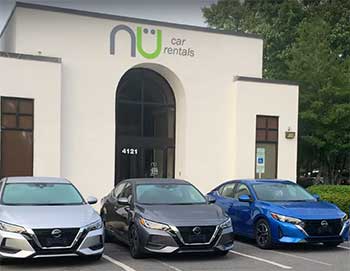
When I compare Turo with NU Car Rental, the first thing that strikes me is the overall customer experience.
With Turo, you have direct access to a broad, diverse fleet through a user-friendly marketplace that encourages personal interaction with hosts.
On the other hand, NU Car Rental tends to offer a more traditional approach, where you might encounter a limited selection and a more structured rental process.
I’ve found that Turo’s emphasis on community and personal reviews makes it easier to trust the quality of your rental, whereas NU Car Rental often relies on standardized options.
If you’re looking for variety and a chance to connect with individual hosts who treat you like a valued guest, Turo clearly edges out in this head-to-head comparison.
- Turo Vs. Flexways Car Rental

When weighing Turo against Flexways Car Rental, the flexibility in rental durations and vehicle choices is a significant differentiator. Turo provides you with the freedom to choose from a range of unique vehicles for as little as a few hours or as long as you need.
Flexways, while efficient, often sticks to preset rental durations and a more uniform fleet. I really appreciate Turo’s innovative approach where communication with the vehicle owner can lead to tailor-made arrangements that suit your specific schedule or trip requirements.
For travelers who appreciate a bit of wiggle room and a more personalized service, Turo wins over Flexways by offering a level of adaptability that traditional companies sometimes lack.
- Turo Vs. Easirent Car Rental

Comparing Turo with Easirent Car Rental reveals two distinct rental philosophies. Turo’s peer-to-peer marketplace model offers you the chance to explore various vehicle options—from daily drivers to more luxurious rides—each with a personal touch provided by individual hosts.
Easirent tends to focus on simplicity and streamlined processes typical of larger rental chains, which can be beneficial if you prefer consistency over variety.
However, I’ve enjoyed Turo’s vibrant mix of options that cater to different tastes and budgets, along with the detailed host profiles and genuine user reviews. If you value diversity and a rental process that feels personal rather than impersonal, Turo stands out as the more dynamic choice compared to Easirent.
- Turo Vs. ACE Car Rental
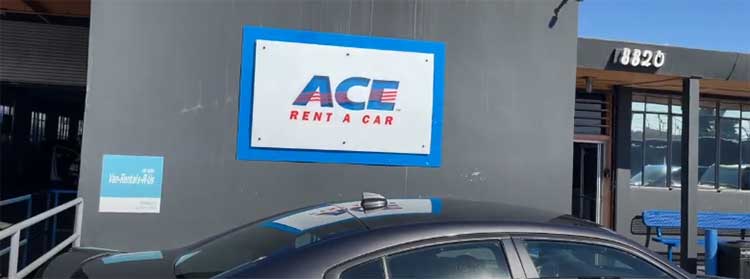
Lastly, when I stack Turo against ACE Car Rental, the differences in technological integration and customer engagement become quite apparent. Turo leverages a modern, app-driven interface that puts you in control of your booking experience, from selecting the vehicle to coordinating the handover with the host.
In contrast, ACE Car Rental often operates with more conventional systems that might not provide the same level of digital convenience or real-time communication. With Turo, every detail—from vehicle specifications to host reviews—is transparently laid out, which gives you the confidence to choose the right car.
For tech-savvy users or anyone who prioritizes an intuitive, digitally enhanced rental process, Turo clearly comes out ahead compared to ACE Car Rental.
In summary, when you compare Turo with NU Car Rental, Flexways, Easirent, and ACE Car Rental, the key advantages lie in Turo’s expansive vehicle variety, personalized service, flexible rental terms, and user-friendly digital platform.
I’ve found that these elements make Turo a compelling choice for anyone looking for a car rental experience that is both modern and customer-focused. Each brand has its strengths, but if you’re after an innovative, community-driven car-sharing experience, Turo is a fantastic option to consider.
Frequently Asked Questions (FAQ)
From my experience, Turo is indeed reliable. The platform hosts a vibrant community of trusted individuals, and the user reviews help ensure that you’re making informed choices. While, like any service, occasional issues may arise, overall, Turo has consistently provided a dependable car rental experience.
Yes, Turo offers several insurance options for both renters and hosts. The coverage details can vary depending on the plan you select and your location. It’s essential to review these details carefully before confirming your rental, so you’re fully aware of what is and isn’t covered.
In the event of damage, the selected insurance coverage typically comes into effect. The process involves reporting the incident promptly to both the host and Turo’s support team. Depending on the severity and specifics of the damage, repairs might be covered fully, partially, or require additional out-of-pocket expenses. Always ensure you understand the terms of your chosen coverage.
Turo operates as a car sharing marketplace where car owners—or hosts—list their vehicles for rent. You browse through available cars, read detailed descriptions and user reviews, then book the vehicle that fits your needs.
Once your rental is confirmed, you connect with the host for key exchange and vehicle pickup. The entire process is designed to be convenient, personalized, and flexible to suit various travel plans.
Final Thoughts
My experiences with Turo have shown me that it isn’t just about renting a car—it’s about embracing a new way of thinking about travel and personal mobility.
With a vast selection of vehicles, personalized service, and competitive pricing, Turo sets itself apart from traditional car rental companies and many car sharing platforms.
While there are some challenges, such as variable vehicle conditions and nuanced insurance details, I believe the overall benefits far outweigh the cons. If you value flexibility, variety, and a more personal connection in your rental experience, Turo is definitely worth considering.
